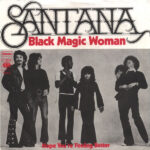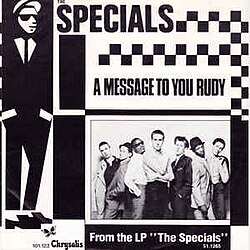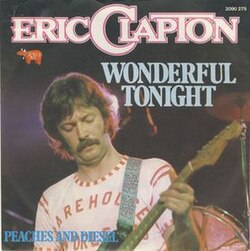 In 1970, Santana released a song that would become a defining moment in their career and a landmark in the fusion of rock and Latin music: “Black Magic Woman.” Originally written by Peter Green of Fleetwood Mac, Santana’s version transformed the track into a hypnotic, sultry, and rhythmically complex masterpiece that showcased the band’s unique ability to blend blues, rock, and Latin percussion into a seamless musical tapestry. With Carlos Santana’s fluid and expressive guitar work at the forefront, “Black Magic Woman” captures the mystique and allure suggested by its title, drawing listeners into a world of passion, intrigue, and musical sophistication. Its seductive rhythms, atmospheric layering, and Latin-infused instrumentation set it apart from the standard rock fare of the era, making it an enduring classic that continues to influence generations of musicians. The song’s release coincided with a period of musical experimentation and genre-crossing, and Santana’s interpretation of “Black Magic Woman” solidified the band’s reputation as innovators capable of creating music that is both intellectually compelling and emotionally captivating.
In 1970, Santana released a song that would become a defining moment in their career and a landmark in the fusion of rock and Latin music: “Black Magic Woman.” Originally written by Peter Green of Fleetwood Mac, Santana’s version transformed the track into a hypnotic, sultry, and rhythmically complex masterpiece that showcased the band’s unique ability to blend blues, rock, and Latin percussion into a seamless musical tapestry. With Carlos Santana’s fluid and expressive guitar work at the forefront, “Black Magic Woman” captures the mystique and allure suggested by its title, drawing listeners into a world of passion, intrigue, and musical sophistication. Its seductive rhythms, atmospheric layering, and Latin-infused instrumentation set it apart from the standard rock fare of the era, making it an enduring classic that continues to influence generations of musicians. The song’s release coincided with a period of musical experimentation and genre-crossing, and Santana’s interpretation of “Black Magic Woman” solidified the band’s reputation as innovators capable of creating music that is both intellectually compelling and emotionally captivating.
Santana: A Band at the Crossroads of Rock and Latin Music
Formed in San Francisco in 1966, Santana emerged during the height of the city’s musical revolution. The band’s lineup in 1970 featured Carlos Santana on guitar, Gregg Rolie on keyboards and vocals, David Brown on bass, Michael Shrieve on drums, José “Chepito” Areas on timbales, and Michael Carabello on congas. This combination of rock instrumentation and Latin percussion created a sound that was rhythmically intricate, melodically rich, and spiritually resonant.
Santana’s music was informed by diverse influences, from blues and jazz to Afro-Cuban rhythms and psychedelic rock. This eclecticism allowed them to push the boundaries of conventional rock music, incorporating complex polyrhythms, improvisational guitar solos, and dynamic percussion arrangements. By the time “Black Magic Woman” was recorded, Santana had already gained recognition for their electrifying performance at Woodstock in 1969, where their unique fusion of styles captivated audiences and established the band as a major force in contemporary music.
The Origins of the Song
“Black Magic Woman” was originally written and recorded by Peter Green with Fleetwood Mac in 1968. While Green’s version was a straightforward blues composition with mystical lyrical imagery, Santana’s interpretation elevated the song into a sultry, rhythm-driven exploration of desire and enchantment. Carlos Santana infused the track with his signature guitar tone—warm, fluid, and expressive—while the band’s Latin percussion added a hypnotic pulse that transformed the song from a standard blues number into an immersive, multi-dimensional experience.
The lyrics themselves are simple but evocative, describing the spellbinding allure of a mysterious woman. Lines such as:
“Got a black magic woman
Got a black magic woman, baby”
emphasize obsession and fascination, creating a narrative of enchantment and seduction. The repetition and phrasing of the lyrics, combined with Santana’s melodic phrasing, reinforce the song’s trance-like quality, inviting listeners to surrender to its rhythm and emotion.
Musical Composition and Arrangement
Santana’s version of “Black Magic Woman” is distinguished by its intricate arrangement and fusion of musical styles. The track begins with a subtle, finger-picked guitar motif that immediately establishes a sense of mystery. This introduction is soon joined by percussion elements—congas, timbales, and drums—that add a rich, syncopated texture, creating a foundation that is both hypnotic and propulsive.
The song’s harmonic structure is based on minor blues progressions, which contribute to its moody, sensual atmosphere. Carlos Santana’s guitar work is the centerpiece, featuring sustained notes, expressive bends, and fluid vibrato that convey both longing and intensity. His solos are lyrical rather than purely technical, emphasizing emotion and storytelling through melodic phrasing.
Keyboardist Gregg Rolie’s contributions provide additional harmonic depth and texture. His organ lines weave through the guitar melodies, complementing Santana’s solos while reinforcing the song’s mystical, almost otherworldly ambiance. The interplay between guitar, keyboards, and percussion creates a sense of conversation and interaction, highlighting Santana’s ability to fuse individual talents into a cohesive, dynamic soundscape.
Percussion and Rhythmic Complexity
One of the most striking features of Santana’s “Black Magic Woman” is its complex rhythmic foundation. The band’s use of Latin percussion—timbales, congas, and other instruments—creates polyrhythms that drive the song forward while maintaining a hypnotic, trance-like quality. Michael Shrieve’s drumming anchors these rhythms, providing steady beats and accents that interact seamlessly with the percussive flourishes of Areas and Carabello.
This fusion of rock and Latin percussion was innovative for its time. While many rock bands in the late 1960s and early 1970s experimented with rhythm, few integrated Afro-Cuban and Latin influences as seamlessly as Santana. The result is a track that is rhythmically intricate without feeling cluttered, allowing listeners to be swept along by its infectious groove while still appreciating the technical proficiency of the performers.
Carlos Santana’s Guitar: Voice of Enchantment
Carlos Santana’s guitar is the defining element of “Black Magic Woman.” His tone—smooth, sustained, and slightly overdriven—creates an expressive quality that serves as the song’s emotional voice. Santana’s phrasing is deliberate and melodic, emphasizing tension, release, and nuance rather than sheer speed or virtuosity.
The guitar solos are particularly notable for their storytelling ability. Santana conveys a sense of longing, mystery, and passion, mirroring the lyrical theme of obsession with a “black magic” woman. Each note and bend seems carefully chosen to evoke mood and atmosphere, demonstrating Santana’s mastery of the instrument as both a melodic and expressive tool.
Lyrical Themes and Emotional Resonance
While musically captivating, the lyrics of “Black Magic Woman” reinforce the song’s hypnotic quality. The repeated references to enchantment, seduction, and mysterious allure create a narrative that is both universal and enigmatic. Listeners are drawn into the story, feeling the tension between fascination and danger inherent in the metaphorical “black magic woman.”
The song’s emotional resonance is enhanced by the contrast between minor-key harmonic progressions and rhythmic vitality. This duality—sensual and slightly ominous, yet irresistibly danceable—ensures that the track remains compelling across repeated listens. It captures the complex interplay between desire, fascination, and apprehension, transforming a simple blues-rock structure into a multifaceted musical experience.
Production and Sonic Aesthetics
Produced by the band and their collaborators, Santana’s “Black Magic Woman” benefits from a warm, organic production style that highlights the interplay between instruments. The mix balances the percussive elements with the melodic lead guitar, ensuring clarity while maintaining a sense of depth and space. The production enhances the song’s hypnotic quality, allowing each instrument to contribute to the overall atmosphere without overwhelming the others.
The sonic aesthetic emphasizes fluidity, texture, and warmth. The percussion is punchy yet nuanced, the bass is deep and driving, and the guitar and keyboards float above the mix with a sense of melodic freedom. This careful attention to production details ensures that the song maintains its impact whether experienced on record, radio, or in live performance.
Live Performances and Audience Reception
“Black Magic Woman” quickly became a staple of Santana’s live shows, offering the band ample opportunity for improvisation and extended solos. Live performances often include an extended jam section, blending “Black Magic Woman” with “Gypsy Queen” (written by Gábor Szabó), creating a dynamic interplay between structured composition and spontaneous musical exploration.
Audiences respond enthusiastically to these performances, drawn in by the song’s groove, mystique, and Santana’s commanding presence. The live setting amplifies the hypnotic qualities of the track, with percussion, guitar solos, and crowd interaction enhancing the immersive experience.
Cultural Impact and Legacy
Santana’s rendition of “Black Magic Woman” has left an indelible mark on both rock and Latin music. It demonstrates the power of genre fusion, showing how Latin rhythms, blues-based harmonies, and rock instrumentation can coexist to create something unique and enduring. The song has influenced countless guitarists, percussionists, and bands seeking to explore cross-genre experimentation while maintaining commercial appeal.
Its enduring popularity is also reflected in continued radio play, inclusion in films and television, and covers by a wide range of artists. The song remains a touchstone for Santana’s career, a highlight in the band’s extensive catalog, and a benchmark for musical creativity in the fusion of rock and Latin styles.
Why “Black Magic Woman” Matters Today
Decades after its release, “Black Magic Woman” remains relevant for its musical innovation, emotional depth, and cultural significance. The song’s fusion of Latin percussion and blues-rock guitar set a precedent for future artists seeking to blend genres without losing authenticity. Its hypnotic rhythm and expressive guitar solos continue to captivate new audiences, ensuring its status as a timeless classic.
The track also exemplifies the power of musical storytelling. Santana’s ability to translate the lyrical theme of obsession and enchantment into melodic, harmonic, and rhythmic expression demonstrates how instrumental performance can elevate and deepen narrative content. It is a masterclass in combining musical technique with emotional resonance, creating a song that transcends time and genre.
Final Reflections
“Black Magic Woman” is a quintessential Santana track that captures the innovation, passion, and musical sophistication of the early 1970s. Released in 1970, the song showcases the band’s ability to blend blues, rock, and Latin rhythms into a seamless, hypnotic, and emotionally charged musical experience. Carlos Santana’s guitar work, the band’s intricate percussion, and the song’s sultry narrative combine to create a track that is both technically impressive and universally captivating.
Its legacy endures not just as a chart-topping hit, but as a landmark in the fusion of musical styles, demonstrating the possibilities of cross-genre experimentation. “Black Magic Woman” invites listeners into a world of mystique, allure, and rhythmic sophistication—a world where passion and musicianship converge to create a truly unforgettable experience. For those seeking a song that is timeless, hypnotic, and emblematic of musical innovation, “Black Magic Woman” remains essential listening and a definitive statement of Santana’s artistry.


